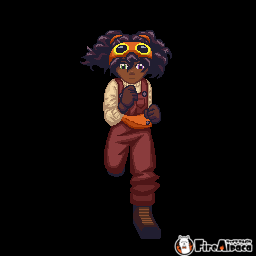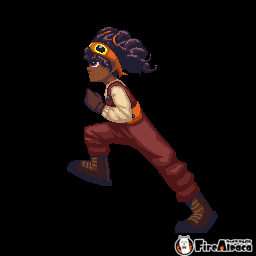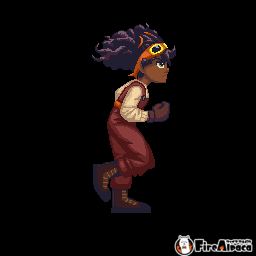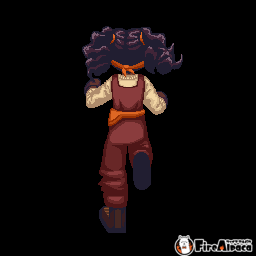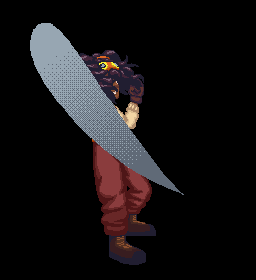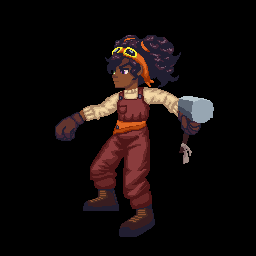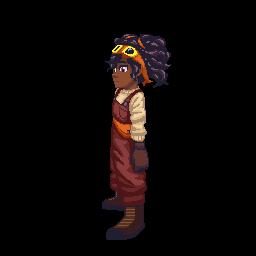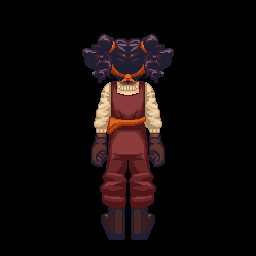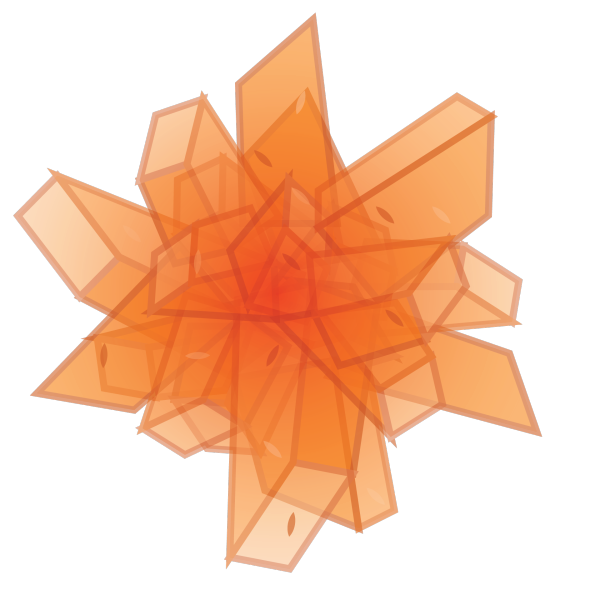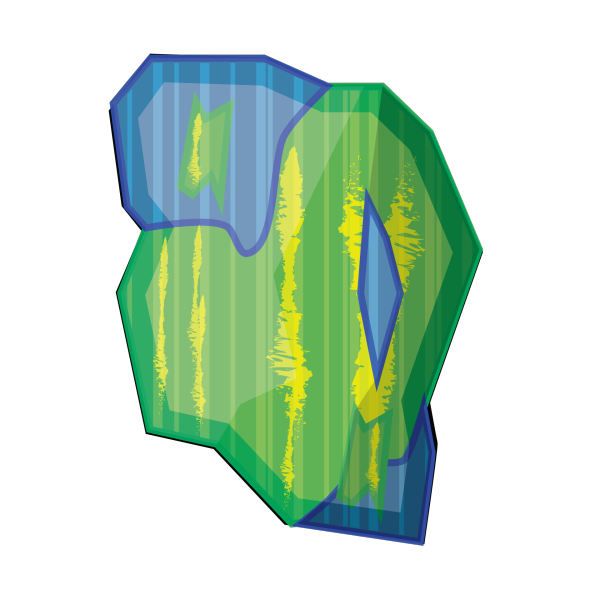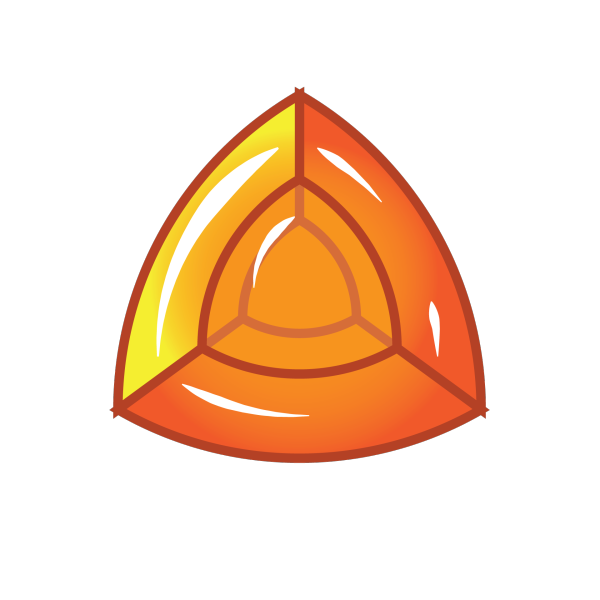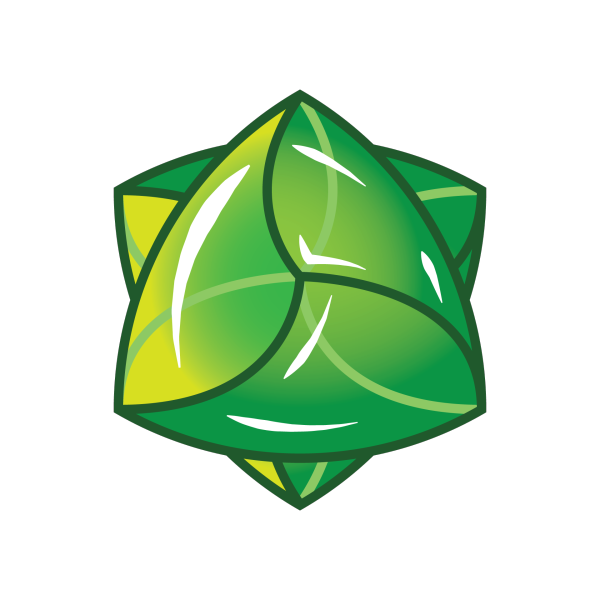GDEX 2020 & Summer Updates
Well, here we are…
It would be an understatement to say that 2020 has been a challenging year. Reflecting on 2020 brings up many hindsight moments, including missed opportunities, but also feelings of success, and an overall sense of accomplishment. We’ve all had to struggle with new obstacles that blocked us from our true potential, but the struggle has, at least for us, been extremely valuable.
The world has shifted—we are evolving into a more digital, yet more connected world. And of those connections, one has made an impact on people now more than ever. Games allow people to challenge, play, and relax with one another. Games tell meaningful stories, promote comradery with coworkers and friends, and can give new ways to encourage those who are afraid to speak out.
Now more than ever, we need positive games that leave an impact on those who take the time to view, understand, and reflect on them.
At AfroDuck Studios, we understand the potential for unique games that tell compelling stories and our team has used this as our driving force. This past year, we’ve worked countless hours in the creation of a new story, independent of its tale, but still part of a larger narrative. Zakumba: Astraia has been a delight and wonderful experience and we are excited that we can share a small snippet of our work for everyone to share. Here is what we look forward to sharing with the world.
The Story
Astraia’s story has transformed countless times since her initial conception in 2016. Back then, we saw her as a side character in a much larger narrative (which is still in development,) but as these things often do, she kept pushing the forefront of our minds, and as we listened to her, her story grew. When our team decided to break up our original game into separate smaller releases—mainly because our director had too grand a vision for a first project—Astraia was chosen to be the character we would focus solely on. Doing this allowed the story to write itself, as we wanted to tell a singular story focused on the adventures of a young black girl who lived in a complex and magical world. Astraia’s story is compact and stands on its own; however, she will still play a key role in the final tale our team is planning.
Art & Animation
Astraia has gone through many iterations in the past few years, and we have our talented artist to thank for all the work that has gone into her design changes. Our lead character artist, Yayira Dzamesi, was able to take all the previous concepts and hone them into a compact and distinguishable character design.
Astraia Nana Abena
A determined young girl with a knack for inventing tools and armor, Astraia resides in the city of Pyrophestus, Also known as the “Industrial Village” within the land of Zakumba. Raised by her hobbyist inventor father, Kofi, Astraia sets her sights on creating the world’s best Golem. (Designed by Yayira Dzamesi)
One of the design choices our team loves most about Astraia is her hair and eyes. Her eyes suffer from heterochromia, a side effect of the crystal sickness, which gives her the green and purple eye effect. Astraia’s hair is short, but bouncy with lots of volumes, thanks to our art director, Ellen Bartlett, who worked tirelessly to give three-dimensional life to our 2D sprites.
Initially, we had gone through multiple sprite/pixel versions of Astraia, all conceptualized by our talented animator, Elena Garcia until we settled on a mix between a cartoon and a realistic art style for the gameplay. This change drastically increased our canvas size and Astraia’s default pixel size became 256X256. This forced us to scale up props, enemies, and other assets to accommodate, and this in turn made it easier to incorporate many of the finer details, and the game as a whole looks better for it. The increased size also became important after we began road-mapping all the animations we wanted to include for our first demo release and made it easier to plan what was important and what we also wanted to save as a stretch goal.
With all that planning we were able to complete and implement the following animations for Astraia:
Running (4 Directions)
Walking (4 Directions)
Melee Attack 1 (Hammer Swing Forward)
Melee Attack 2 ( Combo Hammer Swing)
Melee Attack 3 ( Mace Swing)
Defend/Shield( Version 1)
Defend/Shield( Version 2)
Combat Idle
Standing Idle
Death/Faint
Tinker
You will be able to see each of these animations if you pay close attention to how Astraia moves around the factory and interacts with certain objects.
For enemies, we designed a creature called a Morp, a gelatin slime-creature, whose original sole purpose was to quickly test out Astraia’s combat mechanics. We wanted to create a creature that would be fun to defeat, but also easy to create. During testing, we found the creature was extremely satisfying to encounter and decided to use it as our staple enemy for our first demo. We decided not to include any other creatures due to time constraints for our GDEX reveal however, it became clear that the Morps would regardless, become a fan favorite. We designed the following animations for the Morp:
Attack 1 (Gelatin Fist)
A Fist with an Attitude
The Gelatin Fist is dangerous because of its wide reach with enemies.
Attack 2 (Tentacle Swarm)
Squiggly but Deadly
The Tentacle Swarm allows the Morp to defend and attack at the same time.
Defend(Crystallization)
Harder than a cacoona…maybe
In its crystallized state, The Morp becomes almost indestructible. Unless you were to smash it into pieces. But who’s gonna find time to do that?
The Art Team has spent enormous amounts of time working on props, backgrounds, and concepts for the game, and when we had finally settled on our roadmap for the Beta, it became a wheelhouse of production.
We established the location of the demo to be set in the Abandoned Factory, a location we plan on having in the final release. The abandoned factory was designed to be a large space that Astraia could explore, fight, and test out her abilities.
The Final Design of the factory helped us visualize what the world of Zakumba would look like.
Narratively, the Abandoned Factory is a building that was deserted after the people of Pyrophestus found other means to develop their tools and weapons, which did not require the old technologies in the factory. These were left to time, and only true treasure-seekers now attempt to scavenge what was left.
We also chose this location because its large space made it the easiest to implement, and it provides the setting for the first real scene planned for the final release. Describing it as “abandoned” allowed us a lot more space to play in, as most of the machines were scavenged long ago.
The concept designs for the Abandoned Factory were initially done by Ellen Bartlett to get the idea of the scene in place.
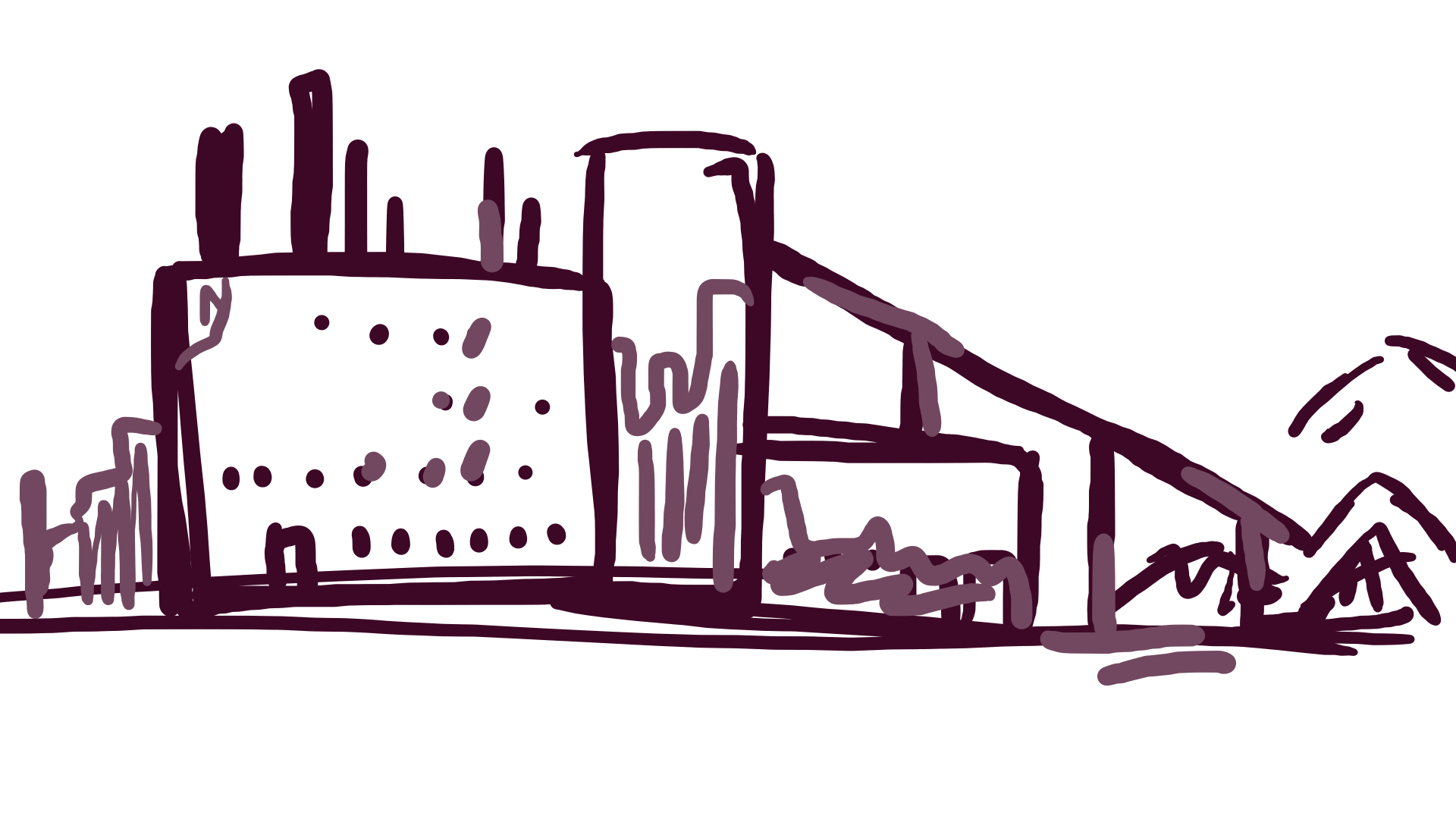
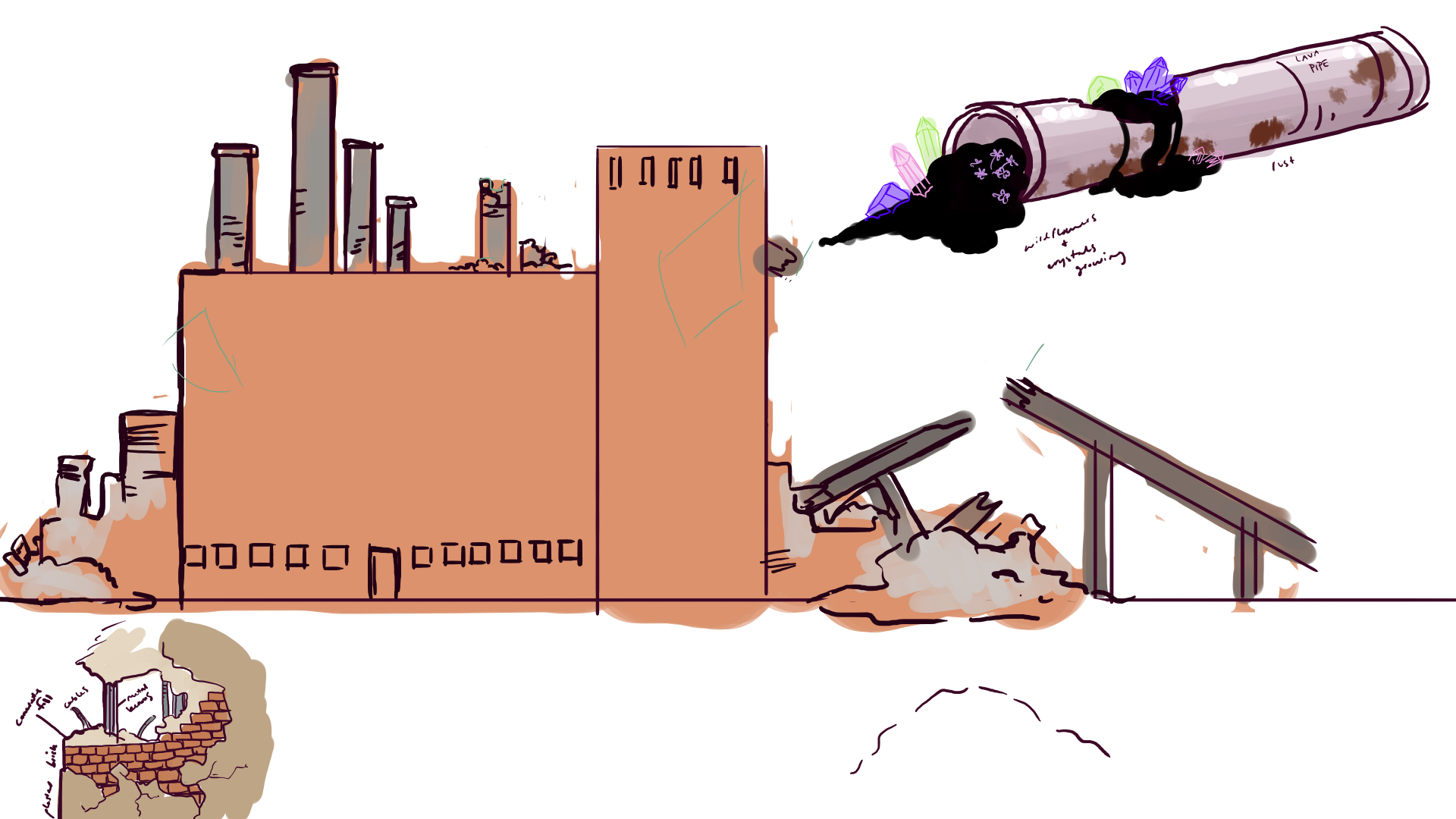
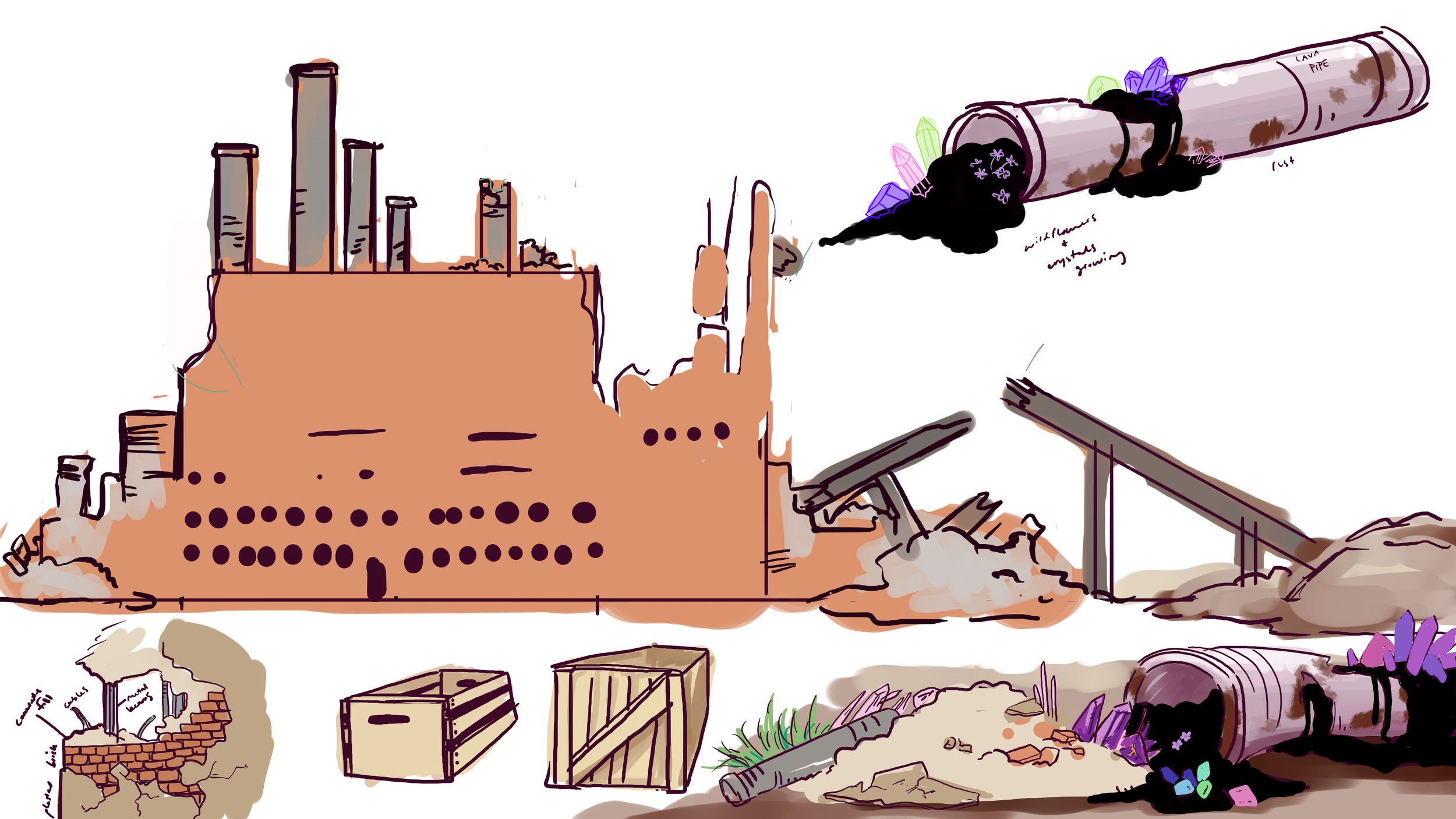
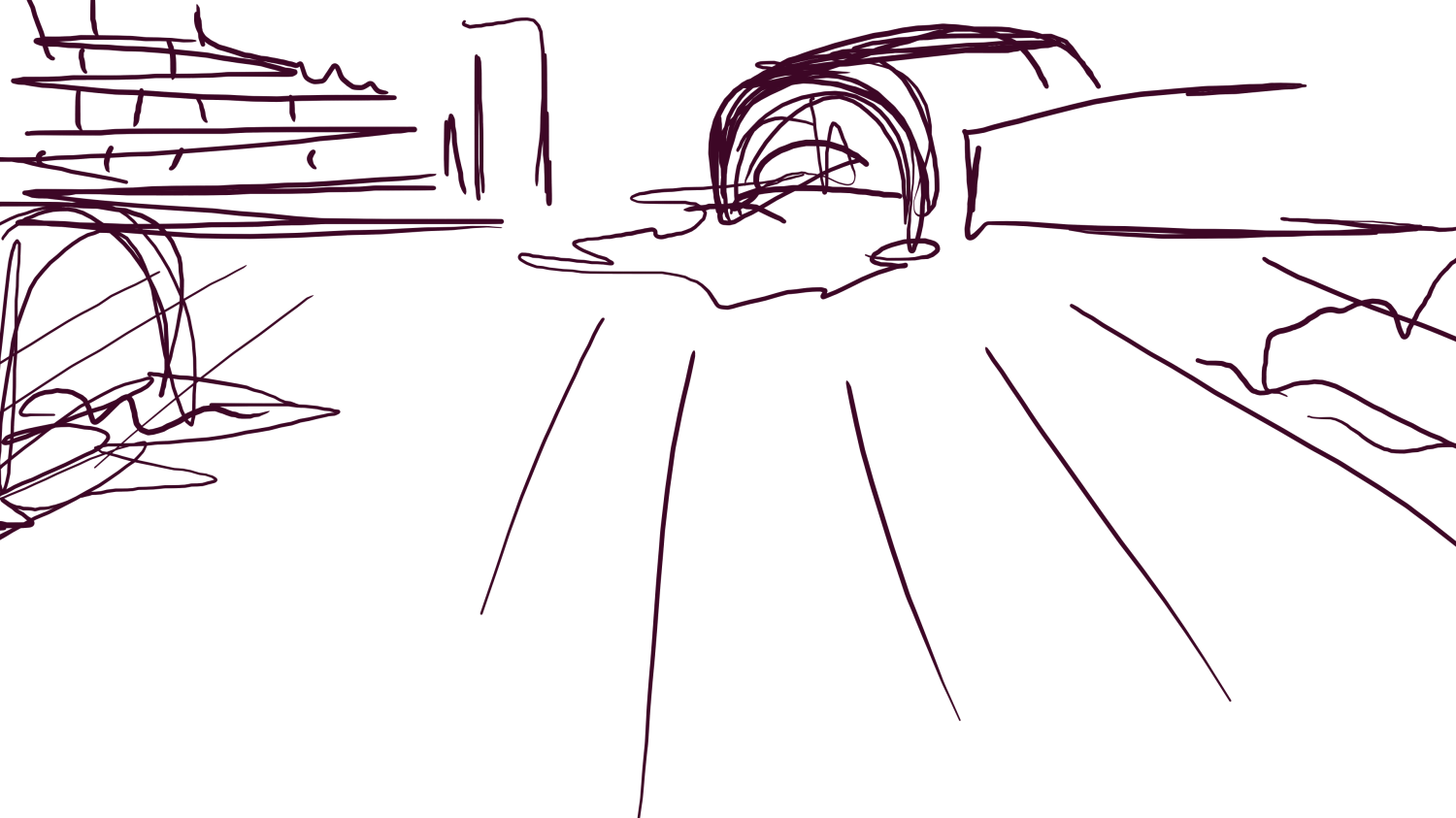
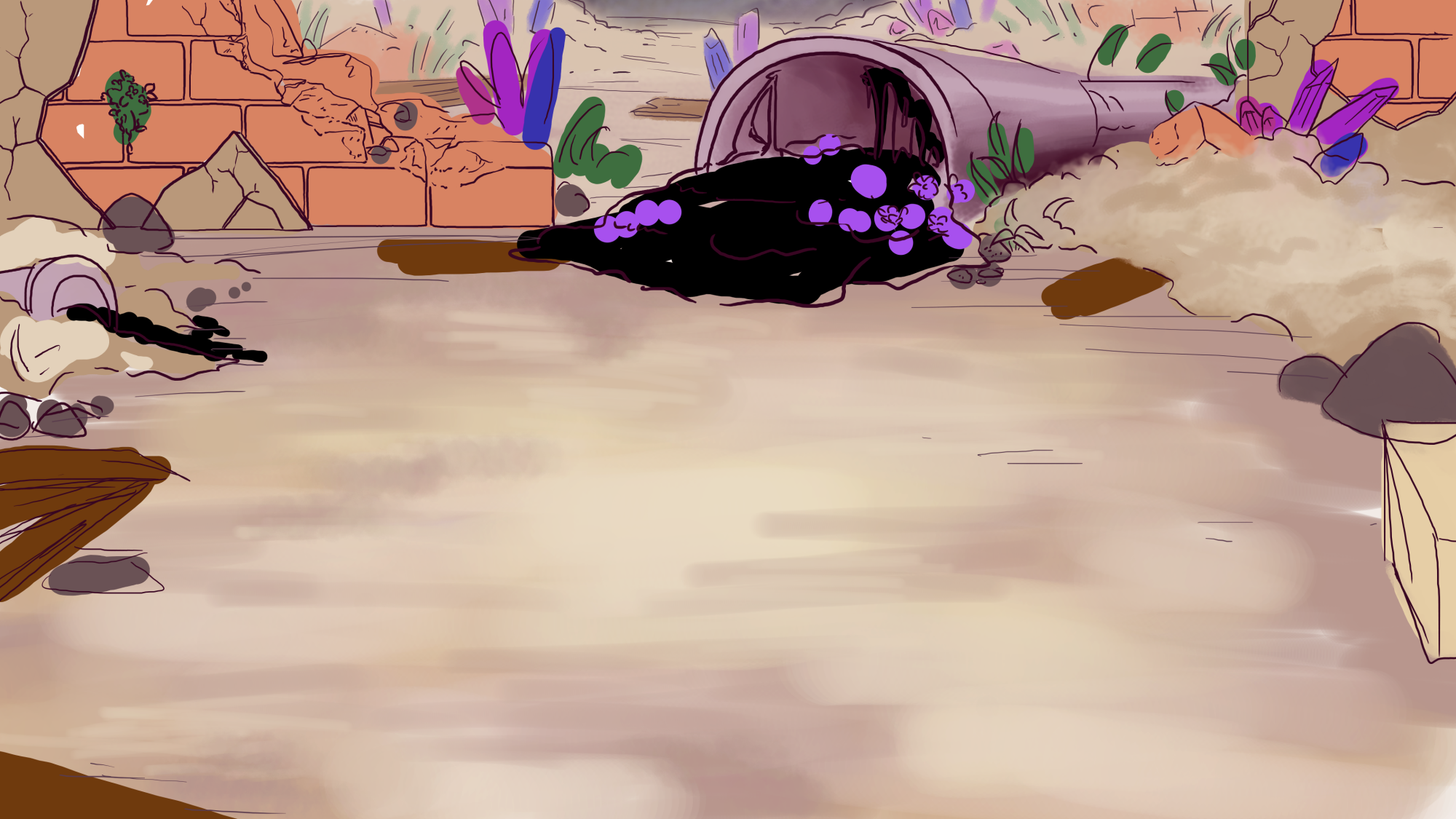
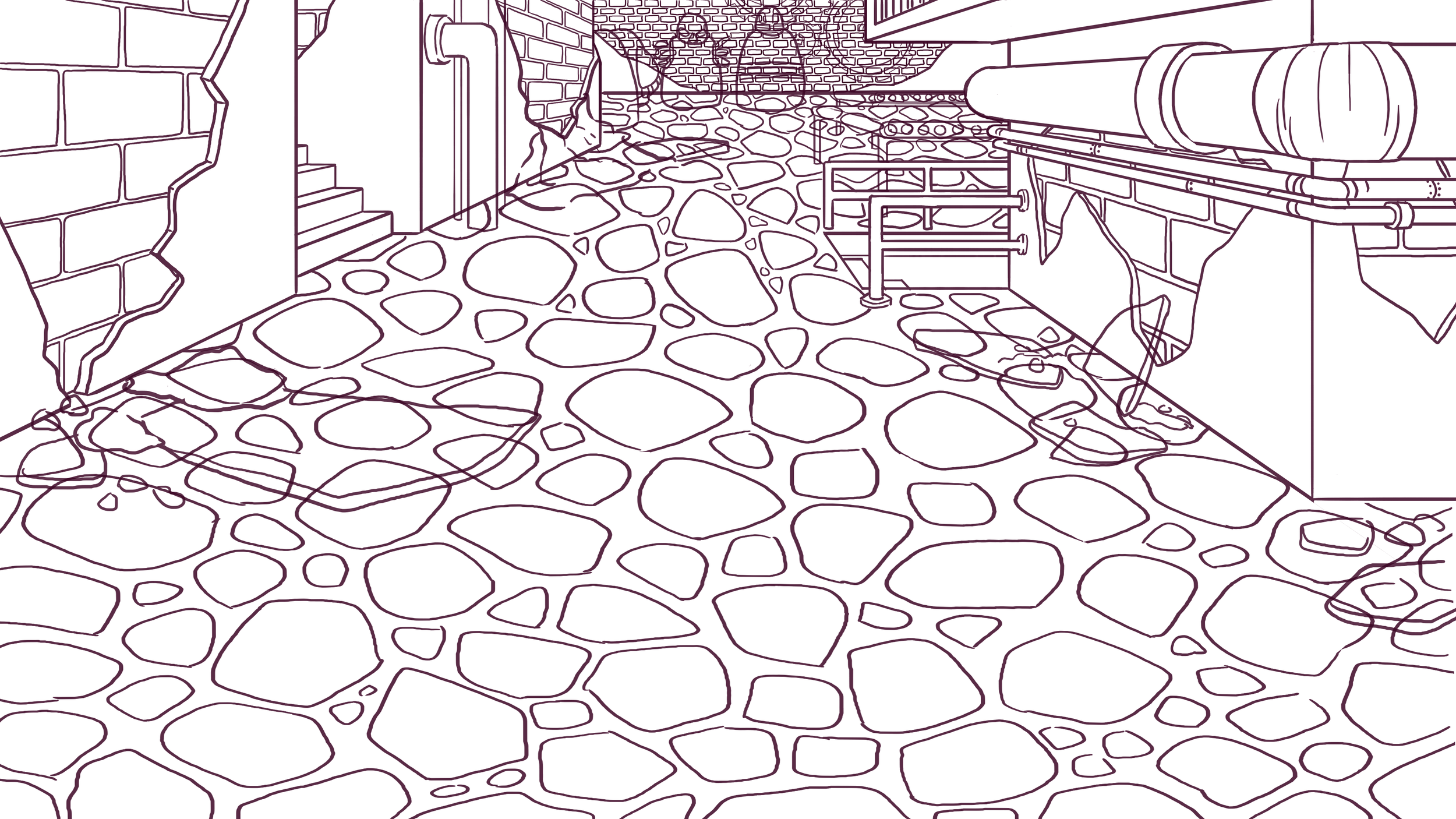
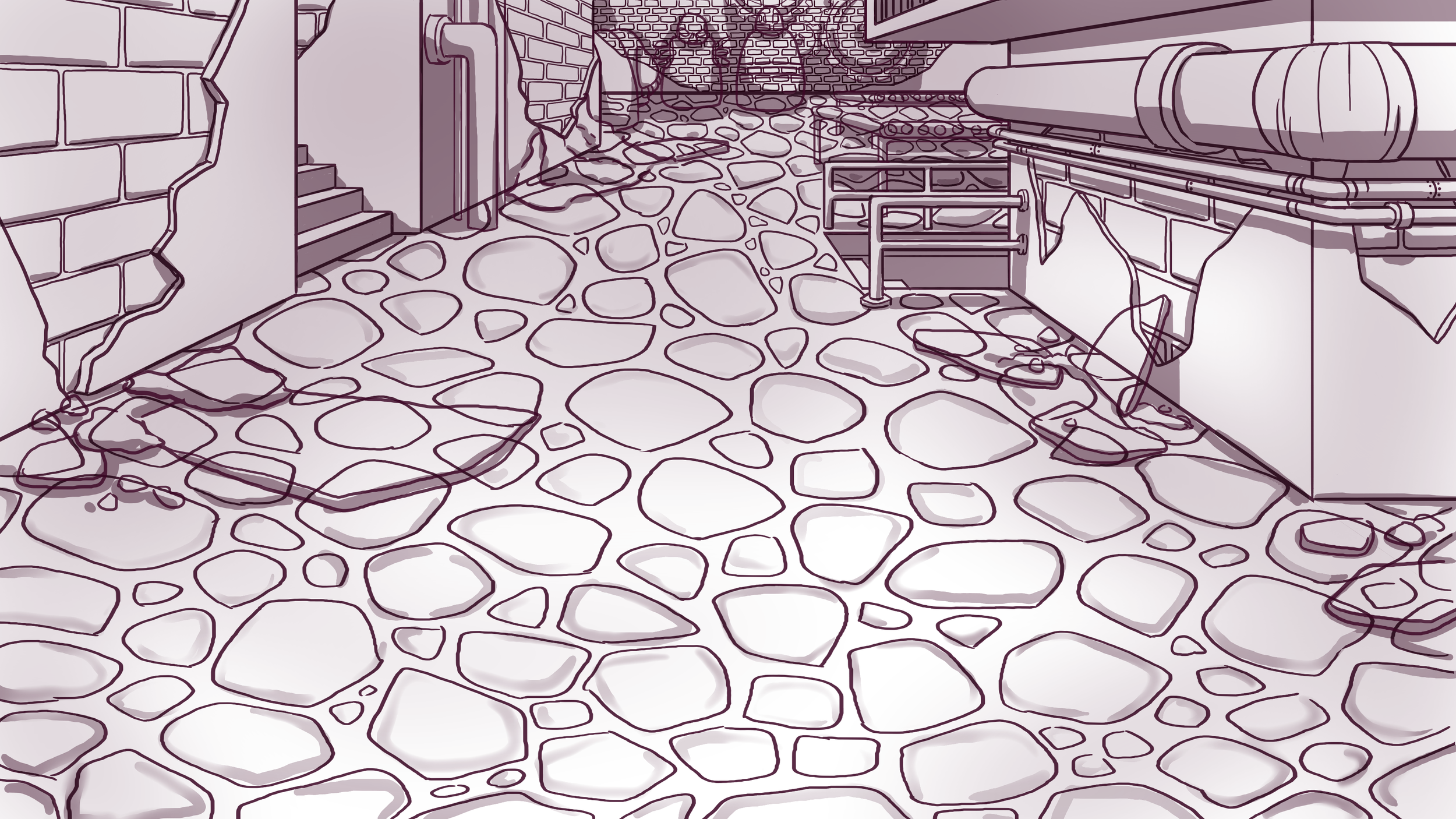
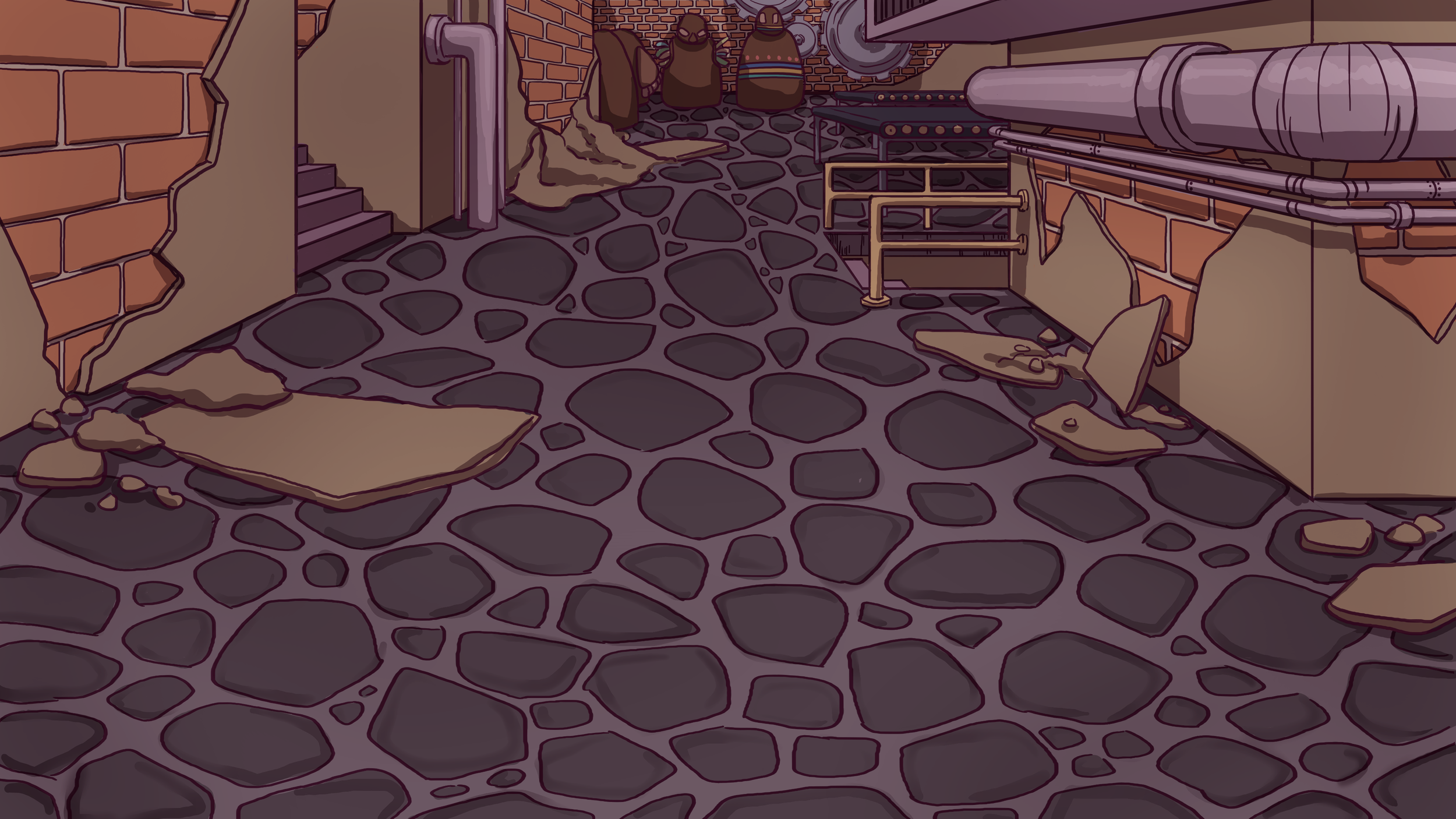
We moved on to implementing the final scene after our Level Designer and creature creator Winston Clark lay out the blueprints of the map and how the player would navigate through each room.



One of the hardest challenges we found when creating level assets was limiting the amount of detail we wanted to include. We didn’t want to slack on the designs, but we also needed to create assets quickly to complete our first Alpha for playtesters. Finding a balance is what hinders many first-time game developers such as ourselves. Not wanting to place too much emphasis on looks and focus more on functionality was one of our main focuses when planning for our demo release. However, the process was still fun nonetheless and we learned a lot during this time.
One of the largest tasks that took much longer than we originally anticipated was the intro Animatic sequence for the demo. Because our team did not have time to create a full sequenced intro animation, we instead opted in for a storyboarded animatic. This was meant to display the important parts of the narrative and follow Astraia throughout key points as she was entering the factory for the first time. We actually got the idea from a small indie game called “Under What?” That game had such a beautiful sequence and we knew it was the right step for us.
The entire sequence became a twenty-two scripted panel comic book style intro which turned out extremely well. Our game Illustrator, Serena Yoakum, worked on this tirelessly and made the first preview of Astraia’s narrative so beautiful.
Our Art team has worked phenomenally over the past year and we could not be more proud of the products they have pushed out. The exciting part about all of this is the fact that it will only get better!
Combat & Exploration
Zakumba: Astraia is an Action-Adventure game that follows the traditional beat ‘em up style gameplay. The main mode of combat revolves around Astraia’s melee combat skills. Currently, there are a total of three melee attacks Astraia can perform:
Hammer Swing
The Hammer comes down on the enemy!
Hammer Swing Combo
Continus three hit attack!
Mace Swing
Swing Swing Swing!
Alongside melee attacks, we are introducing a new attack method called Crystal Attacks. This idea came after we received feedback on the combat being slow-paced and passive. We wanted to make combat with Astraia exciting, strategic, and engaging.
Crystal Attacks are a new way to engage and defeat the enemies you face, and they implement a rock-paper-scissor approach. Narratively, the crystals function as a power source for different weapons and armor. In their Raw State, a crystals full power can be unleashed but can also be depleted quickly. Mechanically, the player will be able to cycle between the crystals they currently have equipped and utilize different types of attacks based on the crystal they currently have selected.
Every crystal’s design is based on a different element, and each element corresponds with a specific type of enemy, who in turn has resistances and weaknesses to the other elements. This means that, based on the enemy you face off against, the crystal will have a higher effective damage rate than using a regular attack. Strategy!
For example, in our current demo, the main enemy that we face is a Morp. The Morps have a deadly Gelatin Fist and Tentacle Swarm Attack. Each of these attacks deals with different amounts of damage, but they are based on the same melee attack range. Astraia can equip a specific type of crystal and the input for that attack becomes that element. If Astraia goes up against a Fire Morp, she would utilize a Water Crystal which would deal much more damage to the Morp than a regular melee attack. The same goes for Nature against Water, and Fire against Nature.
In combat, they act differently about their animation and attack types. These are as follows:
Water Crystal Attack
A series of Bubbles will display where the player initiates a hit. The bubbles are set to explode either after 5 seconds or when an enemy interacts with it and damage is then impacted.
Fire Crystal Attack
A large display of fire explosions come forth in a straight line to hurt the enemy. These last for a short 1-second train of 5 bursts before disappearing in smoke.
Nature Crystal Attack
Large vine stalks will grow from the ground surrounding Astraia and damage any enemy that is within the area of attack. The vines have a 2-second delay before they disappear and wither back into the ground.
Within the world, there also exist man-made counterparts of the crystals that are referred to as “Refined” crystals. These are crystals that have been purified and cut for a specific purpose other than equipment to weapons and items. Examples of alternative uses could be keys for doors, batteries for machines, and fine jewelry. We wanted crystals to be more than just a mechanic for the game, but also part of the world and its culture.
These are the only three crystal types that we’ve implemented so far for the demo, to test out functionality and see how players enjoy utilizing them. We have plans to create a wide variety of crystals that each have different effects and abilities. No two crystals will act the same and some are planned not to have any element at all but instead offer stat bonuses and other quirky features.
We took the traditional approach with explorations, allowing the player to navigate through the open space in the level and giving them items and objects to pick up and interact with. There is a mechanic that we are experimenting with specifically with Astraia that we refer to as “Astraia’s Workshop.” This is designed to allow more features such as building and equipping different weapons to Astraia and her party, based on the items she finds in her environment.
The idea for Astraia’s workshop is pretty simple on a functional level. As Astraia explores the environment around her, she has the opportunity to collect random pieces of items, or scrap, which will be stored in her inventory. The items that she stores can then be accessed from the pause menu and used as materials to develop different types of items that can be used in combat. To build these new tools, Astraia will also have a journal that will unlock different blueprints that can be discovered all over the area.
Sketch of Astraia’s blueprints and designs when planning for Astraia’s Workshop (Designed by Yayira Dzamesi)
Although this feature has not yet been released with our current demo, it is the next big challenge on our roadmap after combat becomes more functional.
Director’s Thoughts
As the first project, our studio has worked on and planned to release, Zakumba: Astraia is a large undertaking that, to be quite frank, may not have been the best idea for a first game. I sit and laugh because I only wanted to start making videogames just three years ago but I did not want to do any coding or draw any of my characters. All I wanted to do was tell a unique compelling narrative that would subvert people's expectations and want to know more about these characters and the world that was being built.
The past few years were not easy and the biggest challenge for me was finding a way to communicate all my ideas to my team. There were many times when I felt the decisions I was making were not worth the time to implement and I was putting more stress on my team and the studio. It was not until this past year that I grew out of my reserved shell and became more open and confident with expressing my ideas and displaying a much better understanding of all the skills my team had.
We are not a professional studio by any means. You could say we just entered middle school and we are now in our awkward years trying to figure out our identity and worrying about how other studios perceive us. However, what is a standout feature of our newly developed studio is our willingness to adapt to pretty much any situation that is thrown at as. Zakumba: Astraia has seen so many changes from early ideas of a 3D game to incorporating a pokemon style art technique to creating a text-based adventure. We had to play to our team's strengths and nurture our weaknesses until we found the right style for us.
No one on our team is an expert in their field but they are a jack of all trades and more importantly, a sponge for knowledge. They have placed extreme amounts of time and work into this project and I would not be writing this today without their support.
With that being said, we hope you follow our journey as we keep working on this project. We look forward to hearing feedback from everyone.
Best Regards,
Kwesi Christian
Creative Director
AfroDuck Studios
Thanks for reading
TLDR; We added a bunch of attacks and pretty colors!





